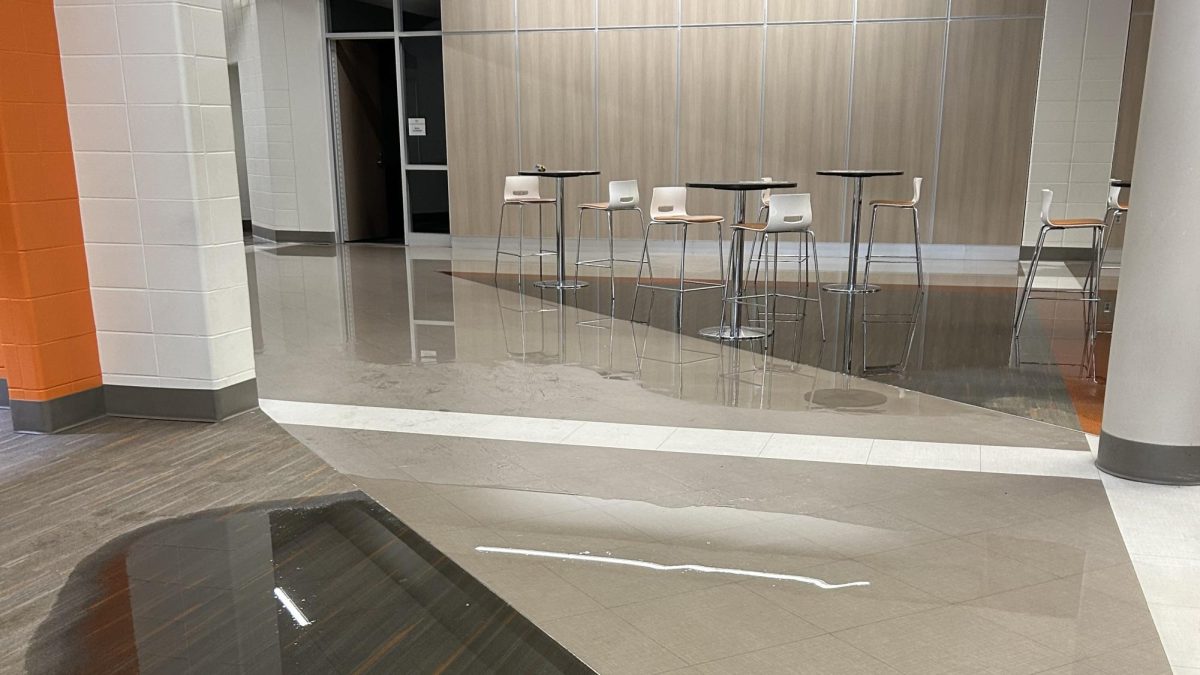After living in Bowling Green for the last four and a half years, I have gotten used to many of the typical issues that come with owning a college apartment. I can sleep through everything from passing trains to the footsteps of the noisy neighbor upstairs who, I swear, must be practicing for a spot in Michael Flatley’s “Lord of the Dance.” I have accepted that my busy schedule constantly leaves my room looking like the love child of a Goodwill clothing bin and a recycling facility. I am even used to signing waivers for apartments that have at least 50 layers of lead paint on the walls that is, almost always, an exuberant eggshell white.
The typical college apartment bathroom, on the other hand, has a separate color scheme all its own. Along with the standard white background there are usually spots of brown and black mold. Kind of like a negative of a night sky photograph with tons of furry, growing, dark stars. Romantic, I know.
There have been fuzzy fungi lingering above the shower in every apartment I have lived in. I never really cared about it until my girlfriend moved in. She, like many other college students I know, has experienced the same problem in her previous living situations. Now she thinks the mold is making her sick.
Instead of visiting the Health Center and enduring the typical pregnancy interrogation, we looked to Web MD for some answers. Indoor allergens, like mold, commonly affect those in the college student age range. While mold can cause allergic reactions, Web MD says it rarely causes serious health problems.
With this in mind, I began to wonder how living near mold for so long had affected my own health.
I am a 22-year-old diabetic. I was diagnosed with type 1 diabetes during finals week at the end of my sophomore year, which was the first year I lived in a moldy apartment. This was a huge surprise for me because my family has no history of diabetes. While there is no officially recognized cause for it, I have found there are others who believe mold may have led to their diabetes diagnosis.
Diabetes123.com is a Web site allowing anyone to post questions about diabetes and have them answered by physicians and researchers. In July of 2006, a parent of a diabetic 4-year-old girl asked if the diagnosis could be linked to their home which was recently condemned due to mold problems. The response was that the link between mold and diabetes had not been studied enough to know.
Another family from Brookfield, Wisc., said in August 2007 they had numerous health issues while battling mold in their home. Their son was diagnosed with type 1 diabetes without having a family history of the disease and they believed the mold played a role. The response from the experts was the same. There was no link between mold and diabetes.
My story is similar to these. Before I moved into my first apartment, it had been used for storing furniture and it was obvious it had not been cleaned in awhile. It was an attic apartment so the ceiling sloped down near the walls. Unfortunately, the ceiling also sloped down over the shower too, which left just enough space for a fully grown fifth grader to bathe comfortably. At 6 foot 3 inches tall I had to make myself look like one of those straws with the flexible neck to avoid the mold every time I took a shower.
Due to a lack of funds, I had to move back into the same place my junior year. It might have been a hole in the wall place to live, but it was a cheap hole in the wall. That year I found out the neighbors just below me had their apartment condemned due to a black mold infestation. Mine likely had the same problem. Over the past year and a half, I have lived in different apartments in the same building and both had the usual bad ventilation which lead to mold in the bathroom.
I don’t know for sure if mold caused my lazy pancreas. What I do know is the November 2007 edition of the American Journal of Transplantation contains an article that says by administering tacrolimus to rats, researchers were able to induce diabetes. For those who aren’t doctors and don’t have a dictionary, tacrolimus is an immunosuppressive drug that was discovered in a type of fungus. Perhaps there is a link between diabetes and mold after all.
Any way you slice it, mold is unhealthy. Even though that seems obvious, I don’t think enough college students take their living conditions seriously. I know I have been ignorant to my rights as a tenant in the past and now I may be paying for it. Consistent with the rampant political apathy of our generation, college students seem content with just ignoring the problem even though it could be contributing to an unhealthy atmosphere.
Mold in an apartment is a lot like watching Notre Dame football this year, it is often disgusting and too much will make you sick. As the weather gets colder and closed windows restrict the flow of fresh air, mold problems will only get worse and tenants should do something about it.







